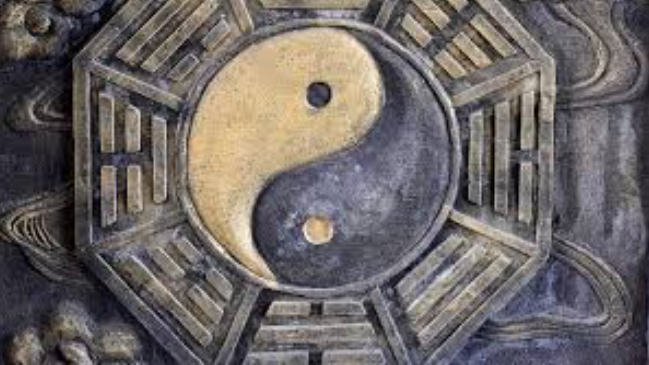Understanding Exorcism in Taoism: Myths vs. Reality

Exorcism is a concept that has long fascinated and frightened people, often portrayed in films and popular culture as a dramatic confrontation between good and evil. While these depictions are usually exaggerated, exorcism is a very real practice in certain spiritual traditions, including Taoism. However, Taoist exorcism is deeply misunderstood, and much of what people believe about it is rooted in myth rather than reality.
In Taoism, exorcism is not about banishing demonic entities in a violent or dramatic fashion. Instead, it is a spiritually grounded process aimed at restoring balance and harmony, both within the individual and in their environment. Let’s explore the true nature of exorcism in Taoism and clarify the misconceptions surrounding it.
The Spiritual Context of Taoist Exorcism
In Taoism, the universe is seen as a dynamic system of energies, with everything interconnected through chi, the life force. Health, happiness, and well-being are all influenced by the state of one’s chi. If there is a disruption or blockage of chi, it can lead to physical or emotional ailments, misfortune, and even spiritual disturbances.
Exorcism, in the Taoist tradition, is a means of clearing away negative or harmful energies that may be causing these disturbances. Rather than focusing on “evil spirits” as external entities, Taoist exorcism often seeks to correct imbalances in a person’s energy field. In many cases, what is perceived as a spiritual problem might be caused by unresolved emotions, stress, or environmental factors that disrupt the natural flow of chi.
Myth: Taoist Exorcism is Violent or Fearsome
One of the most common misconceptions about exorcism, largely fueled by horror movies, is that it involves violent rituals, screaming, and chaotic confrontations with evil forces. This is far from the truth in Taoism. Taoist exorcism is a peaceful, methodical process that focuses on purification, healing, and restoring balance.
Taoist masters, like Mak Jo Si, use specific rituals, prayers, and tools such as talismans, incense, and chanting to shift the energy in a space or individual. The goal is to calm disruptive energies, not to fight or overpower them. Exorcism in Taoism is seen as a healing process rather than a battle, aimed at promoting well-being and restoring harmony.
Myth: Exorcism is Only for Extreme Cases
Many people believe exorcism is reserved for extreme cases of possession or hauntings, but in Taoism, exorcism can be applied to a wide range of situations. It is not only used to address spirit disturbances but also to cleanse spaces, remove bad luck, and heal emotional wounds.
For example, a person might seek an exorcism after experiencing a series of misfortunes or illnesses, which could indicate an imbalance of energy in their life or environment. In these cases, the Taoist master would perform rituals to cleanse the negative energy, allowing positive chi to flow freely once again.
The Role of the Taoist Master
In Taoist exorcism, the role of the Taoist master is crucial. Trained in the arts of ritual, energy work, and meditation, the master acts as a mediator between the individual and the spiritual world. Through years of study and practice, they learn how to perceive disturbances in a person’s energy and apply the appropriate rituals to resolve them.
Taoist masters, like Mak Jo Si, also draw on their deep understanding of Taoism’s spiritual principles to ensure that exorcism is conducted in alignment with nature’s balance. They approach each situation with wisdom and care, ensuring that the individual or space is purified and brought back into harmony.
Exorcism and Healing
At its core, Taoist exorcism is a healing process. It is not about fear or confrontation, but about clearing away negative influences that disrupt one’s life. Whether those influences come from within, such as emotional turmoil, or from external sources, the goal is always to restore balance and peace.
Many people who undergo Taoist exorcisms report feeling lighter, more at ease, and better able to move forward in their lives. This is because the ritual addresses not only the spiritual aspects but also the emotional and energetic imbalances that might be affecting a person’s overall well-being.
Taoist exorcism is a deeply spiritual practice aimed at restoring balance and harmony, rather than fighting off evil forces. While popular culture often presents exorcism as a dramatic battle, the reality in Taoism is much calmer and rooted in the flow of energy, or chi. By correcting imbalances and purifying negative energies, Taoist masters help individuals and spaces regain peace, well-being, and positive energy flow. Through this healing process, the myths surrounding exorcism are replaced by a deeper understanding of its true purpose: to restore harmony to the individual and the environment.
You may also like
Archives
Calendar
| M | T | W | T | F | S | S |
|---|---|---|---|---|---|---|
| 1 | 2 | 3 | 4 | 5 | 6 | |
| 7 | 8 | 9 | 10 | 11 | 12 | 13 |
| 14 | 15 | 16 | 17 | 18 | 19 | 20 |
| 21 | 22 | 23 | 24 | 25 | 26 | 27 |
| 28 | 29 | 30 | ||||
